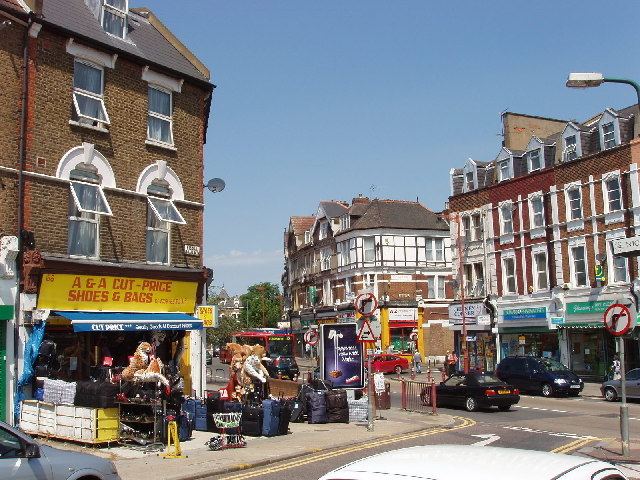OS grid reference TQ215835 Postcode district NW10 Dialling code 020 UK parliament constituency Brent Central | Sovereign state United Kingdom | |
 | ||
Population 17,162 (Harlesden ward 2011) | ||
Harlesden /ˈhɑːrlzdən/ is an area in the London Borough of Brent, northwest London. Its main focal point is the Jubilee Clock which commemorates Queen Victoria's Golden Jubilee. Harlesden has been praised for its vibrant Caribbean culture and unofficially named London's reggae capital. The population includes people of Afro-Caribbean heritage, as well as Irish Catholic, Somali, Brazilian and smaller Portuguese and Colombian communities.
Contents
Map of Harlesden, London, UK
Harlesden has a rich culture of boxing, with two Olympic Gold medallists hailing from Harlesden: Audley Harrison who won gold in the Super-Heavyweight division at Sydney in 2000, and James Degale who won gold in the Middleweight division at the Beijing Olympics in 2008.
History
In the 19th century, Harlesden, then a rural village, began to develop some of its urban appearance with the arrival of the railways. Willesden Junction, Kensal Green and Harlesden stations all had an effect on the developing village. Cottages for railway and industrial workers were built, as was grander housing for the local middle class.
Harlesden increasingly lost its rural nature, with factories replacing farms and woodland. From late Victorian times until the 1930s, housing completed its spread across the area, and Harlesden became part of the London conurbation. Mainly after World War I, one of Europe's biggest industrial estates was constructed at nearby Park Royal, and large factories there included McVitie & Price (later United Biscuits) from 1910, and Heinz from 1919.
The image of Harlesden today began to take shape in the 1950s, 1960s and 1970s. Continued immigration from Ireland and new immigration from the Caribbean, the Indian sub-continent and Africa changed the racial and cultural make up of the area. More recently the area has now become home to Brazilian and Portuguese communities. Much of the housing is made up of Victorian terraces which have been attracting buyers unable to afford similar properties in nearby Kensal Green and Queen's Park.
Starting 1999, Harlesden and the nearby Stonebridge estate, witnessed a high number of murders and became a crime hotspot. It was done by several rival yardie gangs. It turned Harlesden into one of London's main crack cocaine trading centre, and one of the yardies' strongholds. By 2001 the area had the highest murder rate in Britain. There were 26 shooting incidents that year alone. Crime rates were significantly reduced in the late 2000s.
During the nationwide riots of 2011, some shops in Harlesden were attacked by looters.
On 15 May 2016, a route 18 bus lost control and crashed onto a shop in the town centre at two in the afternoon. 17 people, including three children, were injured.
Demography
19% of the population was Black Caribbean, followed by 19% Black African (both including those of mixed heritage), 15% Other White, and 14% White British.
Tube/rail
Stations in the area are:
